Lockheed Martin has signed a memorandum of understanding (MoU) with Navratna Defence PSU Bharat Electronics Limited (BEL) to explore industrial opportunities in the F-21 programme.
Lockheed Martin say it is strengthening and growing its partnerships with the Indian industry to support the company’s F-21 proposal for the Indian Air Force.
“We are excited to begin exploring F-21 opportunities with BEL, one of India’s leading aerospace and defence companies,” said Dr Vivek Lall, Vice President of Stragety and Business Development, Lockheed Martin Aeronautics.
“An F-21 partnership with India integrates Indian industry, including BEL, into the world’s largest and most successful fighter aircraft ecosystem and demonstrates Lockheed Martin’s commitment to India.”
Mrs Anandi Ramalingam, Director (Marketing), BEL, said:
“We are happy to collaborate with Lockheed Martin which is a global major in the aerospace sector. We are eagerly looking forward to cash in on this co-operation to address domestic and international market needs in this sector.”
About the F-21
The F-21 looks like the F-16 but supports new equipment and technology from F-22 and F-35, say Lockheed Martin.
The F-21, say Lockheed, addresses the Indian Air Force’s unique requirements and integrates India into the world’s largest fighter aircraft ecosystem with the world’s pre-eminent defence company.



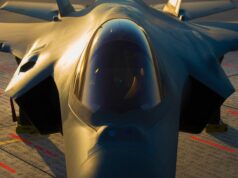

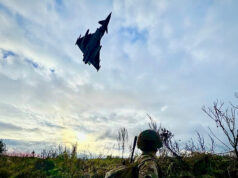
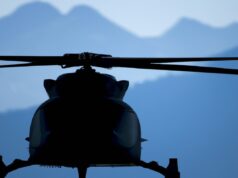
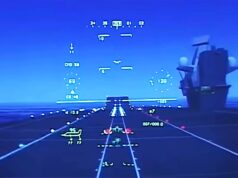
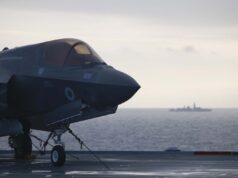

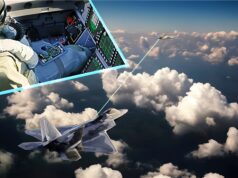
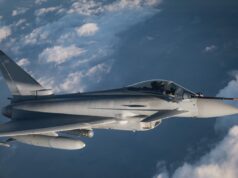
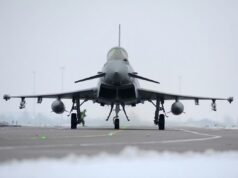

Looks as though LM is trying to milk the last out of the trusty F16. It would probably be a good aircraft but obsolete by the time all the dithering is done on the IAF side…
Cheers
it’s pretty impressive how a late 3-gen jet can be updated to the standard of a 4-gen jet – perhaps with some 5-gen features
The F16 Viper variation is a pretty potent aircraft. The F16I flown by the Israelis is a far more capable aircraft than the version flown by the USAF. It would be a pretty good addition to the Indian Air Force right now but with the years long delays the Indians seem to attach to all of their programs will probably render the aircraft ineffective against PLAF frontline squadrons in the next decade or so and THEY are the real threat to India.
Cheers
I doubt this jet has a chance, since it’s a modernized F16, and Pakistan flies F16. India bought Rafale, so i doubt they want to add a new airframe to their already complicated logistics. Not to mention it’s a single engine, and they have the native Tejas. Lastly India is keen on its independance and would not want to be restricted by possible US sanctions.
How many types of fighter does India need….surely 2 is enough?
They have Mig 21, Mig 29, SU 30MKI, Tejas, Jaguar, Mirage 2000 and Rafale. The migs are being phase out. Logistical nightmare.
Anyway i doubt any single engine version will be bought since they have the Tejas.
The US have a better chance of selling F18SH for the Indian carrier or F15EX (if the US decided to offer them) to replace aging SU30 and Mig29 for the IAF.
Can we please have a modern version of the Jaguar and Lightning, prity please, leave the Typhoons and Lightning IIs for long range work modern BAC lightning for air defence interception and modern Jags for ground support.
Yes I know thats four types of combat aircraft but we have diffrent situations for the UK, to protect the islands of the UK well you need to do that within the 200 mile EEZ it means you need to climb and do it PDQ. Then the support of ground forces, you need to be in the area for a long time, I sometimes wonder if an old Sea Fury would be better then a modern all singing and dancing F35. Would Pearl Harbour or the six day war have been so succesful if the Americans and Egyptians had interceptors. The Fury could hang around for a hour and rain down hell, the F35 put in a few missiles and get out. As a foot slogger I prefer the long term bring down hell. Then would come the F35/Typhoon combination, F35s go in first to destroy radars and anti air missiles and then the Typhoons follow through for the strike. If you think about it, do we need Typhoons in the Falklands, no is an interceptor cheaper than a multi roled bomb bus yes. It has one job to do kill enemy aircraft, so a modern BAC Lightning radars electronics is more simple, a ground support aircraft again is cheaper, its job is simple kill tanks, destroy postions and defend itself against fighters. That could be done with speed, think about the old Mosquito, it used speed to get away from the FW190 but had a sting if you peed them off.
That is why I think four types of combat aircraft, a pure out and out short range interceptor, a ground support, a sneek in and kill and a bomb bus.
Will it cost money, yes but at the moment I fancy my chancies if I was an enemy to fly in low and hit the NE of the UK and definatly to come around the North outside the EEZ and hit Western UK with long range strike aircraft.
Ron – I think you have described a need for the Gripen,ive said before if we had the Financial means id go for a Hi/Medium/Lo fleet of fighters – ie F35/Typhoon/Gripen.If only we had the money !.
Yeep, I agree, if you could put a A-10 Warthog gun on the Gripen it would be ideal. The Gripen would be good for the Falklands, the RN bases in the Persian Gulf, Gib, Cyprus, UK defence and overall for ground troops. The cost is about three Gripens in full configaration to two Typhoons but more like 5 to 3 but I do have one concept or idea in mind the Hawker Siddely P 1154, if your not sure what that is its a supersonic Harrier.
I still think that this concept was or is a better design than the F35B.
A-10 gun on a Gripen?? Have you been on the beer tonight Ron ?? have a great weekend.
Yeah it did enough damage to the A 10 over time.
Interestingly when Bae and Saab cosied up many years ago BAE proposed the two aircraft to potential customers in precisely that combination. That’s said they didn’t have much success.
We kind of do have the money to do this.
The Hawk is in the RAF in large numbers and does have a secondary combat role.
Gripen could replace the Hawk and improve our overall capability and with a fair proportion of it being British, not bad for industry either.
It’s not beyond the realms of possibility as the Hawk is surely coming to its end of life soon (Wikipedia states uk has 109 Hawks)
If we could build a fleet of 128 Gripens to replace the Hawks I think this would be a good thing, but like all things its about cost and at £18m the hawk is certainly vfm, but no where near as good as a £50m Gripen.
Purely on performance, the Tranche 1 Typhoon ticks the box for a dedicated QRA and interceptor. The Typhoon finally beat the Lightning’s UK time to height record. But instead of running out of fuel after being on station for 15 minutes. the Typhoon still has enough internal fuel for being on station for over an hour and then has the option of aerial refuelling. So basically with a full air interdiction load and then from brakes off to 45,000ft with the burners going there’s very little that can beat the Typhoon.
I don’t believe we need the Gripen. It’s ok, but it is no Typhoon, it just doesn’t come close for power to weight ratio. For a fighter, power is everything, it allows you to recover from bleeding speed in high g turns much faster. Allowing the pilot better options for engagement or disengagement.
I don’t think the F35 should be seen as the CAS aircraft, yes it can do the role, but it will have more important missions, such as dealing with enemy air defences. The Jaguar was a good aircraft for its era, but by today’s standards would be a sitting duck. It’s wing had to high a loading and the engine’s power was pathetic. The Harrier was in most respects a better aircraft for CAS and battlefield interdiction. Again, against today’s radar, the Compressor fan of the Pegasus would be dead giveaway.
Therefore, I think you are right in that we need a relatively low cost “manned” aircraft for close air support and battlefield interdiction. It must also be able to look after itself. Perhaps a development of the later BAe 1216 VSTOL aircraft would be a good place to start?
This would surely help matters and with engine spares across the fleet no doubt?
“The company says that a 700h flight test programme is being planned to explore thrust vectoring on a standard Gripen airframe for the export market. Eurojet has proposed to Saab a 102kN (23,000lb)-thrust version of its engine, called the EJ230”
https://www.flightglobal.com/news/articles/eurojet-aims-ej200-variant-at-thrust-vectored-gripen-37567/
The Lightning’s time to height record was to 45,000ft, where it out-matched an F15 (streak eagle), a prototype Mig 25 and lately a prototype Su27. All of which had been significantly lightened, whereas the Lightning used was a frontline aircraft. The other aircraft would go to higher altitudes of 100,000ft plus whereas the lightning could just reach 90,000ft.
https://www.thunder-and-lightnings.co.uk/lightning/memories.php
There is the small matter to discuss of the Lightning intercepting U2s at 65,000ft. The Lightning was the only frontline aircraft that could climb to intercept a U2. See below.
https://www.youtube.com/watch?v=8DdUwIhI-ZA
I’m pretty certain the Typhoon even though its rated to 50,000ft plus, won’t be able to reach the same heights that the Lightning could attain. This is I suppose the difference between having a turbojet and a low bypass turbofan fitted. If the EJ200 was a true variable cycle engine, then I would expect it to be able to push the aircraft to these heights.
I still think the Textron Scorpion https://scorpion.txtav.com/ would make a sensible addition to the RAF and would fill the Jaguar, ground support replacement very well at very low cost.
The problem Scorpion has is that it is neither fish nor fowl. It is far more expensive than a CAS aircraft needs to be for a low threat insurgency and simply not survivable for when there is a threat.
And thats the same issue the A-10 faces.
The Scorpion shouldn’t be more vulnerable than say any other 4th gen fighter, perhaps even less prone to critical damage from small arms fire since it has simple mechanical control linkages. Better than a prop-based CAS aircraft as it can dash to a hot area quickly. These would have been ideal in Afghanistan – 4/5 hours loiter time and 6 wing pylons for weapons. I could see these being ideal for shipping protection in the Persian Gulf – 4/5 hour patrol, dash to a ship under attack, seeing off Irainian fast attack boats with Brimstone or Spear-3. All for peanuts compared with the operating costs of a Typhoon or F-35.
The typhoon has proven its self time and again as a brilliant interceptor, and out performs the lightning. As for close airsupport, this is largely the role of the apache and wildcat that can remain very close to friendly forces and for a long time. Also in operations like Afghanistan and even Iraq when enemy airdefences are low the typhoon can remain on station at height for a considerable length of time. Using its targeting pod as an istar role for the ground troops who can then call on its jdams or brimstone for actuate fire support. We don’t need any new airframes. Just more of what we’ve got.
I’ve often thought a carbon fibre update of the De Haviland Hornet
had potential. I worked with an FAA type who’d flown them and said it was an amazing a/c. Did they ever get to Korea like the Sea Fury?
The US is ceasing F/A-18 production in 2021. So unless the Indian’s get in quick there is no chance of it seeing service there. One a hot production line closes it will not re-open.
So its a upgraded F16 bomb bus?
Yup !
I know the ‘First World’ has moved on but there’s a lot to be said for what is now a relatively (albeit elderly) system with a shed load of spares etc available. Its an aircraft that can tick a lot of boxes.
Just goes to show what a great job the designers of the F-16 did with limited technology of the time. A fighter that is highly relevant even in today’s day of the F-22 and F-35.
Singapore Airshow 2020: Boeing prepares potential F-15EX offer for India.
“Boeing is considering offering its F-15EX Advanced Eagle combat aircraft to the Indian Air Force (IAF) to meet the service’s long-running programme to procure more than 100 fighter aircraft.”
https://www.janes.com/article/94294/singapore-airshow-2020-boeing-prepares-potential-f-15ex-offer-for-india
Iwould take that press anouncements with a pinch of salt. This is noise from Boeing desperate on making up for lost sales.
I have not heard that India has shown any interest, MMRCA is for medium aircraft and the F15 is big. India have fairly recent SU30MKI which fits that role.
Also not sure if the US government is on board. Previous versions of the F15 have only been sold to a select few of US close allies. The F15EX is the latest most modern version that the US is just starting to use themselves. The older F15SE may be a more feasible alternative.
Finally Boeing needs a local Indian partner for offsests and some TOT as a requirement for the MMRCA 2.0 bid, and Boeing so far have nothing in place. There aren’t thousands of potential partners in India, which will make it very hard for Boeing to come up with a credible offer.
I think it’s a little bit more than a pinch of salt.
“Boeing was responding to a query from FlightGlobal after a 9 February meeting with Kelli Seybolt, deputy under secretary of the Air Force for international affairs, who disclosed that Boeing had sought an export licence for India for the F-15EX.
The licence will allow Boeing to discuss the F-15EX with Indian officials in compliance with the USA’s International Traffic in Arms Regulations.”
https://www.flightglobal.com/singapore-air-show-2020/boeing-mulls-f-15ex-offer-to-india/136694.article
Brain fart. I completely forgot that Boeing does have agreements with local partners HAL and Mahindra that they set up for F18 offer. Sorry my bad